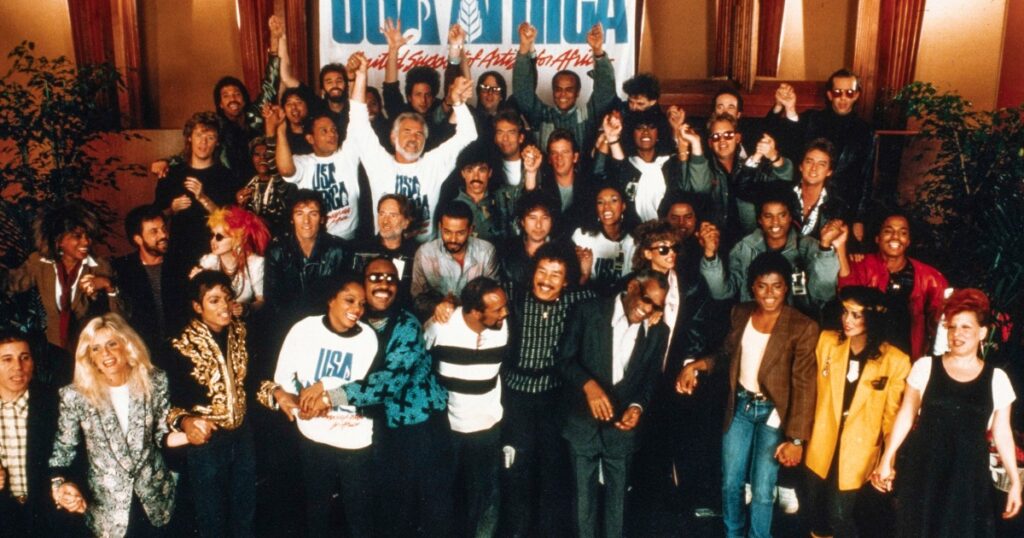If you haven’t spent the last several years, as I have, deep-diving into the history of the 1985 charity megahit “We Are the World,” then you probably don’t know that Stevie Wonder invited two Ethiopian famine survivors to the stuffy Los Angeles studio where dozens of superstar pop artists had gathered for a one-night-only shot at getting the song on tape.
You certainly wouldn’t know about the Ethiopian women’s appearance from watching “The Greatest Night in Pop,” the entertaining, if self-congratulatory, new Netflix documentary about the hit, which was the brainchild of Harry Belafonte, co-written by Michael Jackson and Lionel Richie and masterfully shepherded into existence by producer Quincy Jones.
Stevie Wonder invited two Ethiopian famine survivors to the stuffy Los Angeles studio where dozens of superstar pop artists had gathered.
The women, one of whom is featured briefly in an early documentary about the recording, put faces to the cause and, according to reports at the time (in which they are regrettably not named), impressed upon the celebs the gravity of what was happening in their country. (My own attempts to determine those women’s names have come up short. Wonder introduces one of the women by name in that 1980s documentary, but I can’t make out what it is.)
Though many of the stars had no real idea what they’d agreed to before they arrived at the studio, it’s clear from the 1985 film’s footage showing the tearful aftermath of the women’s 4 a.m. appearance that the group was deeply moved by their presence and words of appreciation.
However, in “Greatest Night,” the honor of imparting the story of the Ethiopian famine on Michael Jackson and the gang is given to Bob Geldof, the Irish rocker who was riding high on “Do They Know It’s Christmas?” a charity anthem he co-wrote after seeing a BBC news report about the Ethiopian famine, which was part of the inspiration for “We Are the World.”
The Ethiopian women’s…
Read the full article here





